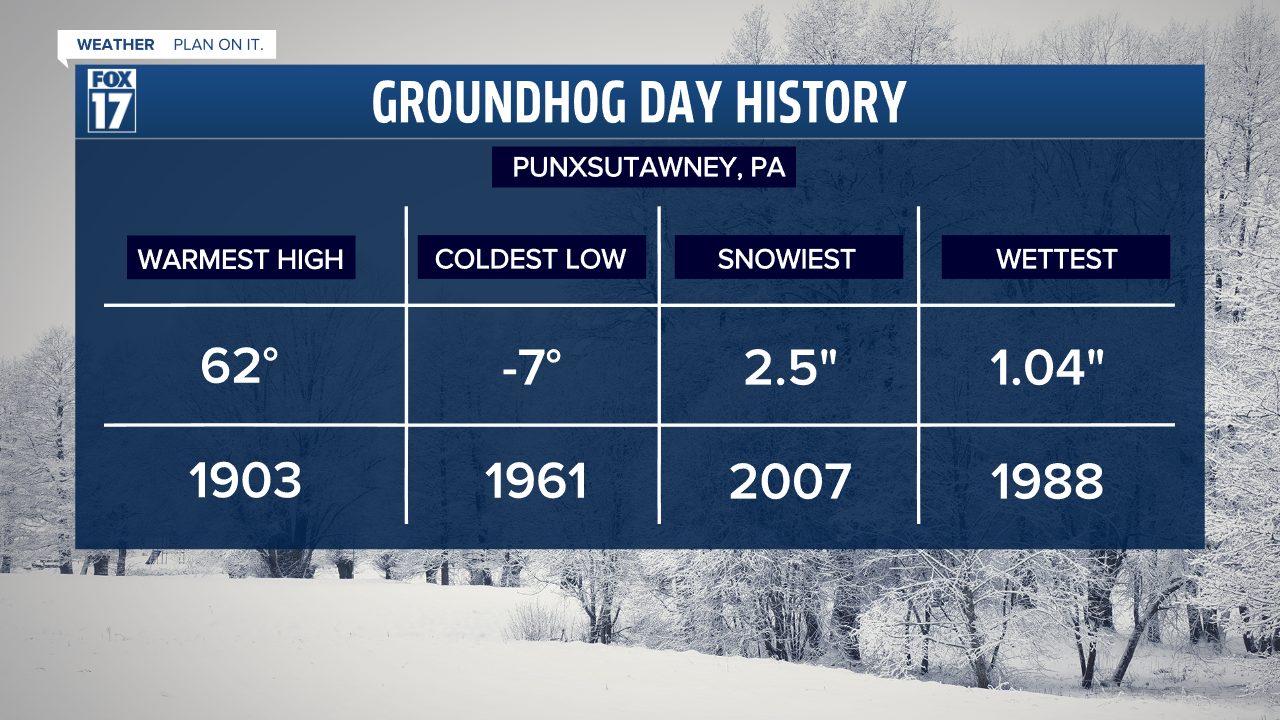Right in between the winter solstice and the spring equinox we find ourselves at Groundhog Day, when Punxsutawney Phil will make his prediction of either 6 more weeks of winter or an early arrival of spring! Of course, his decision is a centuries-old tradition impacting weather predictions for our winter season.
It started with the Romans and where we know it today at Gobbler’s Knob in Punxsutawney, PA dating back to 1886. Let’s look back though on the weather extremes on Groundhog Day since records on the day were kept INN Punxsutawney, PA.

The warmest high was just 62° in 1903, while the coldest Groundhog Day was in 1961—a teeth-chattering -7°! The wettest rodent prediction day happened in 1988 when we saw 1.04” of rain. The snowiest; in 2007 Groundhog Day saw 2.5” of snow. There’s actually an average 75% chance of precipitation at this point in the year, meaning rain and snow are almost sure to be a part of the forecast.

The National Weather Service took a look back at a 10 year period of predictions from 2010 to 2019 where PHIL’S prediction was correct 40% of the time….since then Punxsutawney Phil saw no shadow predicting an early spring in 2020 and saw his shadow in both 2021 and 2022 for 6 more weeks of winter.




